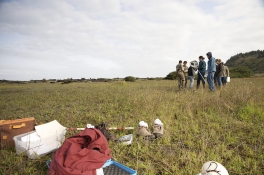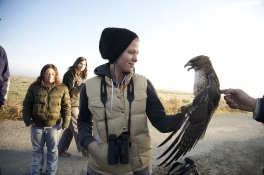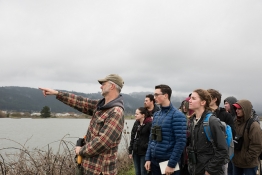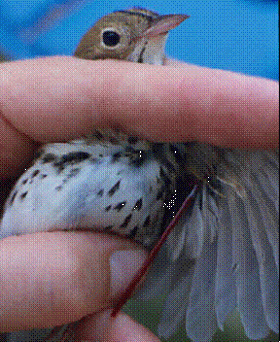Amy Leist
After Humboldt, Amy worked for the Great Basin Bird Observatory.
For her thesis, Amy used blood metabolite analysis to determine if migrating Swainson’s Thrushes selecting habitats rich in food were feeding more effectively than those selecting habitats with fewer fruits. The concentrations of triglycerides and beta-hydroxy butyrate in a bird’s blood can reveal whether that bird has been feeding rapidly, feeding slowly, or fasting in the previous 1-2 hours. Therefore, blood metabolites can be a useful tool to assess foraging habitat quality for migrating songbirds, which are difficult to track or recapture. Following Jim Tietz’s project (see below), Amy worked in and around the Lanphere Dunes unit of the Humboldt Bay National Wildlife Refuge.







